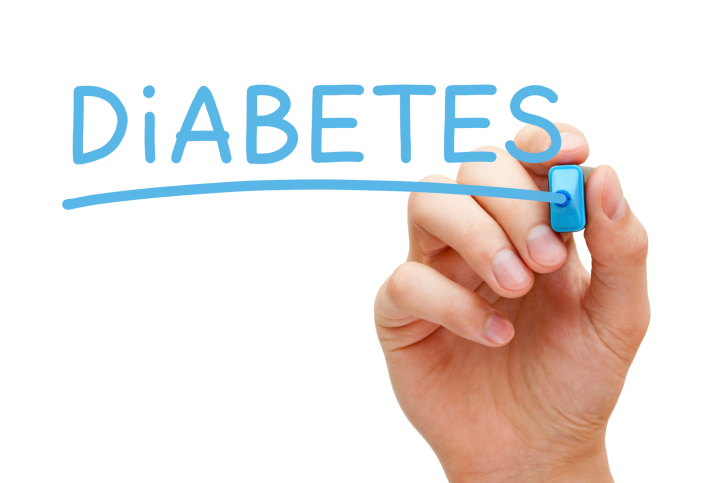Diabetes is a group of diseases that result from too much blood sugar. This is due to inadequate production of insulin in the body. High glucose levels in the blood can also be as a result of inadequate utilization of the insulin.
According to Williams textbook of endocrinology, 382 million people worldwide had diabetes as of 2013. The most common symptoms of diabetes are frequent urination, weight gain, unusual weight loss, intense hunger, and thirst.
There exist three types of diabetes:
Type 1 diabetes
This type occurs when the immune system destroys the beta cells in the pancreas. This results in inadequate or no production of insulin. Insulin is used to transport glucose into other cells for energy production.
Type 1 is common in young children and young adults, it is caused by some virus or some genetics. Even though kids are prone to it, adult too are at a risk of developing it. It is more common in whites than African-American people.
What are the signs and symptoms?
They are often mild but can become severe over time. They include:
- Frequent urination
- Increased thirst
- Blurred vision
- Fatigue and weakness
- Pain in the belly
- Nausea and vomiting
- Dry mouth
- Unexplained weight loss
- Frequent infection of the urinary canal or the skin
- Rapid breathing
What causes it?
It is not known what causes type 1 diabetes but the body usually alerts the immune system to destroy the beta cells in the pancreas. These cells are the one responsible for the production of insulin. Other causes can include genetics and exposure to harmful viruses and other harmful environments.
Which are the risk factors?
Age: It is common in children between the ages of 4 -7 and 10-14 years
Geographical location: It is prevalent as you move away from the equator.
Family history: you are at a higher risk if one of your family members has this type.
What are the complications?
- Dehydration: you tend to pee more due to increased amounts of sugar in your blood. Constant urination leads to dehydration.
- Heart diseases: It increases your chances of developing cardiovascular problems. Among them stroke, heart attack, high blood pressure, and chest pains
- Nerve damage: excess sugar in the blood can damage capillaries that nourish the nerves. This usually causes numbness or burning that happens at the tip of the fingers or toes
- Eye damage: can damage the retina blood vessels leading to permanent blindness.
Prevention
There’s no way to prevent type 1 diabetes.
Type 2 diabetes
The body does not produce enough insulin or resists the effects of insulin. Type 2 diabetes is not curable but can be controlled by eating well and exercising regularly. Other ways to control type 2 diabetes is the use of insulin therapy.
What are the symptoms?
The symptoms become noticeable over time. They include:
- Increased hunger: since no glucose is reaching the cells, the organs and your muscles become energy depleted. This leads to intense hunger
- Fatigue: fatigue is as a result of your cell being sugar deprived.
- Weight loss: since there no traces of glucose, the body uses energy from other sources such as fuel stored in the fats and muscles. This leads to increased weight loss.
- Blurred vision: fluids are derived from your lenses due to high blood sugar. This impairs your sight.b
- Darkened skin: most people with the type 2 will have black skin patches on their neck or armpits. It is as a result of insulin resistance.
What are the causes?
Type 2 diabetes occurs when the body builds resistance to insulin or when there is an inadequate production of insulin. The following conditions can facilitate type 2:
- Obesity: obesity causes insulin resistance. This is due to the extra weight around the abdomen.
- Genes: some genes have an effect on how your body creates insulin
Which are the risk factors?
- Obesity is a primary risk factor. The more fatty tissues, the more cells become resistant to insulin
- The less active you are the more the risk of type 2 diabetes
- You are at a higher risk of type 2 if either of your family members has it
- As you age the risk of type 2 increases.
Prevention
A healthy lifestyle can reduce the risk of type 2 diabetes. You can eat healthy foods, exercise regularly and lose some weight.
Gestational diabetes
It is common in pregnant women. The level of glucose in their blood is higher than normal. After birth, the condition gradually disappears. This type is diagnosed during pregnancy. Exercises and a healthy diet can help mitigate the risk of gestational diabetes.
What are the causes?
During pregnancy, the placenta produces high levels of hormones which impair the action of insulin in your cells. This leads to increased blood sugar. As the baby grows, the placenta also produces more insulin that further affects your blood sugar levels. It usually occurs during the last trimester of pregnancy.
Which are the risk factors?
- Women aged 25 and above are at a greater risk of gestational diabetes.
- You are more prone to gestational diabetes if you are overweight and if your BMI is above 30.
- If any of your family members have gestational diabetes, you are at a higher risk of developing it.
Complications that may affect your baby
- Low blood sugar: babies can suffer from hypoglycemia shortly after birth. This is because to child pancreas is incapacitated to produce adequate insulin.
- Excessive birth weight: when there is extra glucose in your blood, some of it passes to the baby through the placenta, triggering the baby’s pancreas to produce more insulin. This condition can cause the unborn baby to grow big.
- Greater risk of type 2 diabetes: babies of gestational diabetic mothers have a higher risk of type 2 diabetes later in life.
Complications that may affect you
- High blood pressure: you are at a higher risk of high blood pressure if you have gestational diabetes.
- Diabetes: It raises the risk of type 2 diabetes as you grow old. You are also prone to gestational diabetes in future pregnancies








